Cyprus is an island whose nature never “sleeps”. Evergreen trees and year-round flowering create a feeling of eternal summer. Of course, some plants go “dormant,” shedding leaves and appearing to sleep, but they are few. Probably more than half of Cyprus’s trees and shrubs delight residents and visitors with their bright colors all year round.
Spring
Spring transforms the landscapes into a living watercolor, with the eye dazzled by the abundance of flowering trees in Cyprus. Most are fruit and berry trees, but there are also decorative species.
Bauhinia (Orchid Tree) blooms with lilac-pink flowers resembling tropical orchids. This small tree begins flowering in March and delights the eye almost until the end of April, when its vivid purple stands out against fresh greenery.
In the streets of towns and villages, you can often see blossoming oranges and mandarins — small white flowers that may seem unremarkable at first glance, but their scent is simply exquisite. Locals and tourists deliberately slow their steps to enjoy a fragrance reminiscent of fine perfume.

Wild Pistachio is less flashy in appearance or scent, but it literally embodies the ancient history of Cyprus. Its resin and fruits were used for medicinal purposes, food, and even in industry. This evergreen tree with a dense canopy thrives on dry hills and sunny slopes.
Fun fact: Pistachio trees bloom not every year, but once every 2–4 years.
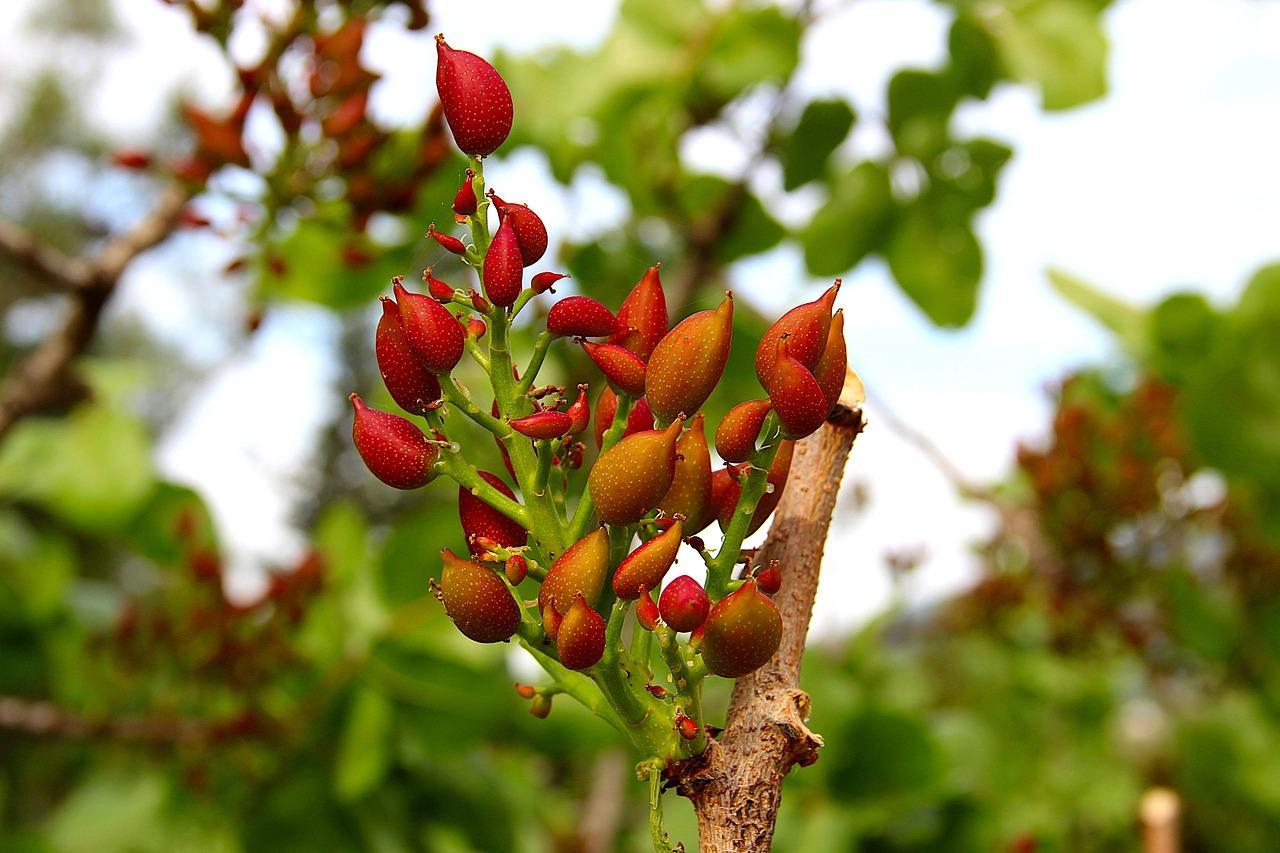
Cherries and cherry blossoms in Cyprus’s mountain villages bloom almost simultaneously. In the village of Kampos, there is an entire Sakura Park — a unique place to admire the fleeting blossoms of these beautiful trees. Photoshoots against the backdrop of cherry blossoms are a common practice in Cyprus.
Schinus molle (Pepper Tree) produces hanging clusters of small flowers, followed by pink berries resembling pepper. Pink pepper is used medicinally — for infusions and even in small amounts for food.
Almond trees are among the first heralds of spring. From late February to early March, their white-pink “clouds” cover the slopes, coinciding with the spring festival of Apokria. Almond blossoms symbolize renewal and the revival of life and have long been celebrated.
Wisteria, technically not a tree but a legume, cannot go unmentioned. Its magical cascades of lilac flowers adorn fences, arches, and other structures, climbing high if given support.
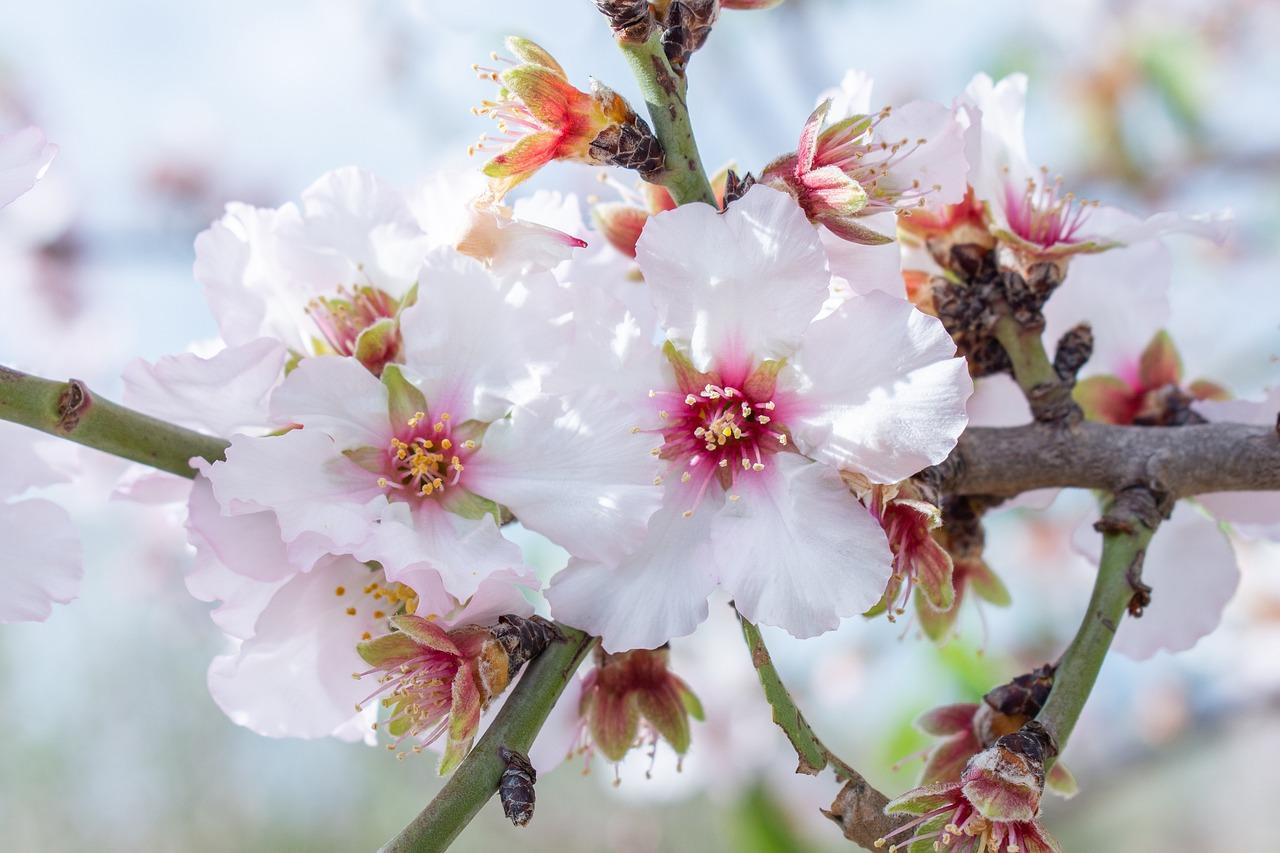
Erythrina (Coral Tree) blooms with dazzling scarlet buds. These flowers resemble tongues of fire, which is why locals often call it the “Flaming Tree.” A fire one cannot — and does not want to — extinguish, as Cypriots say about erythrina.
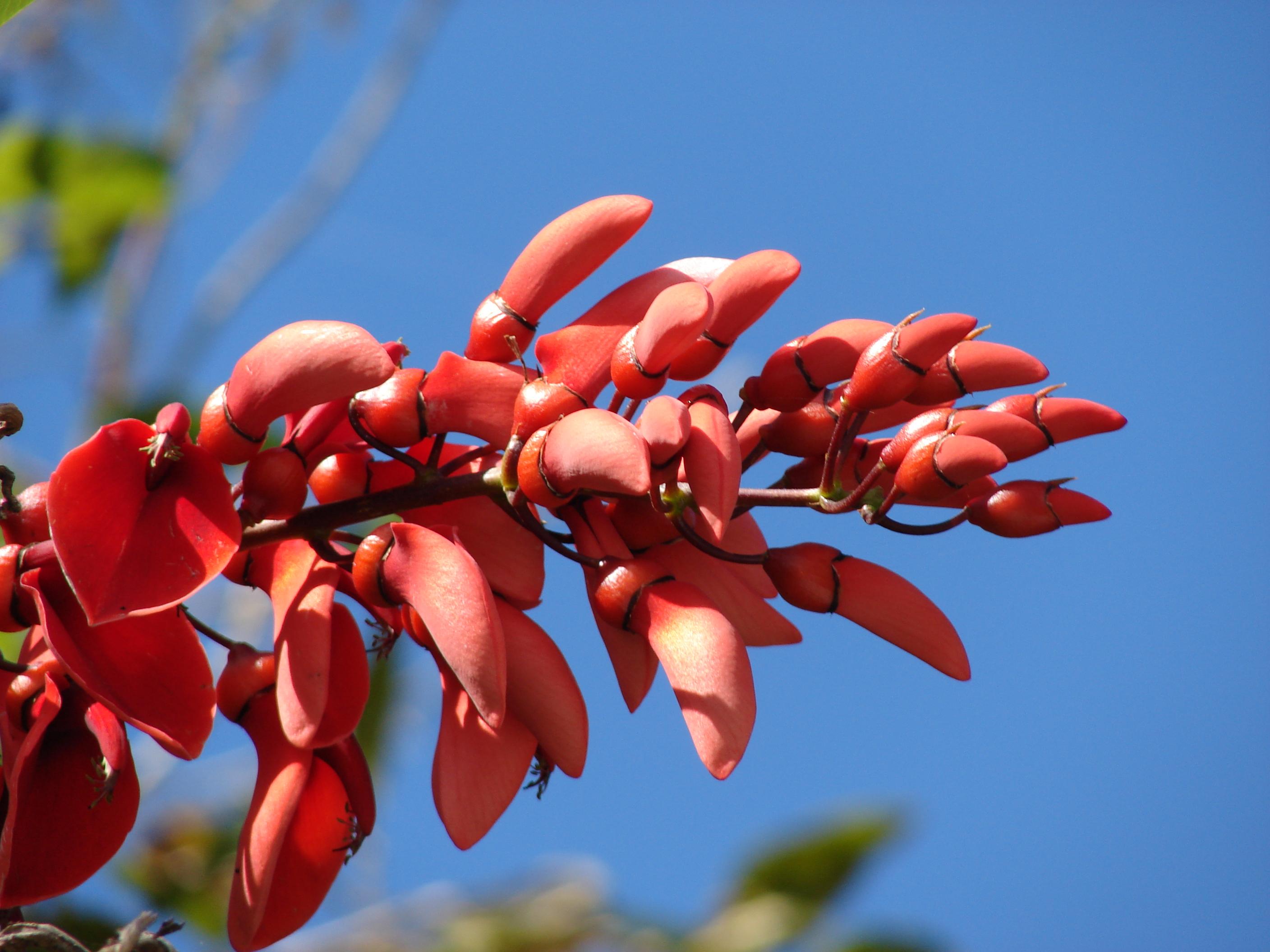
Judas Tree (Cercis, Redbud) blooms around Easter. Its pink-lilac flowers cover the branches along their length, making the tree appear almost leafless. It has no fragrance, but visually, it is striking.
Paulownia tomentosa (Empress Tree), native to Asia, adorns Cypriot gardens with large, carved leaves and delicate clusters of flowers. While not widespread, encountering one on a path is impossible to ignore.
Olive trees symbolize peace and longevity. The oldest olive tree in Cyprus is said to be over a thousand years old. In spring, olive trees are covered with small, inconspicuous white-yellow flowers, which may or may not be fragrant depending on the variety.
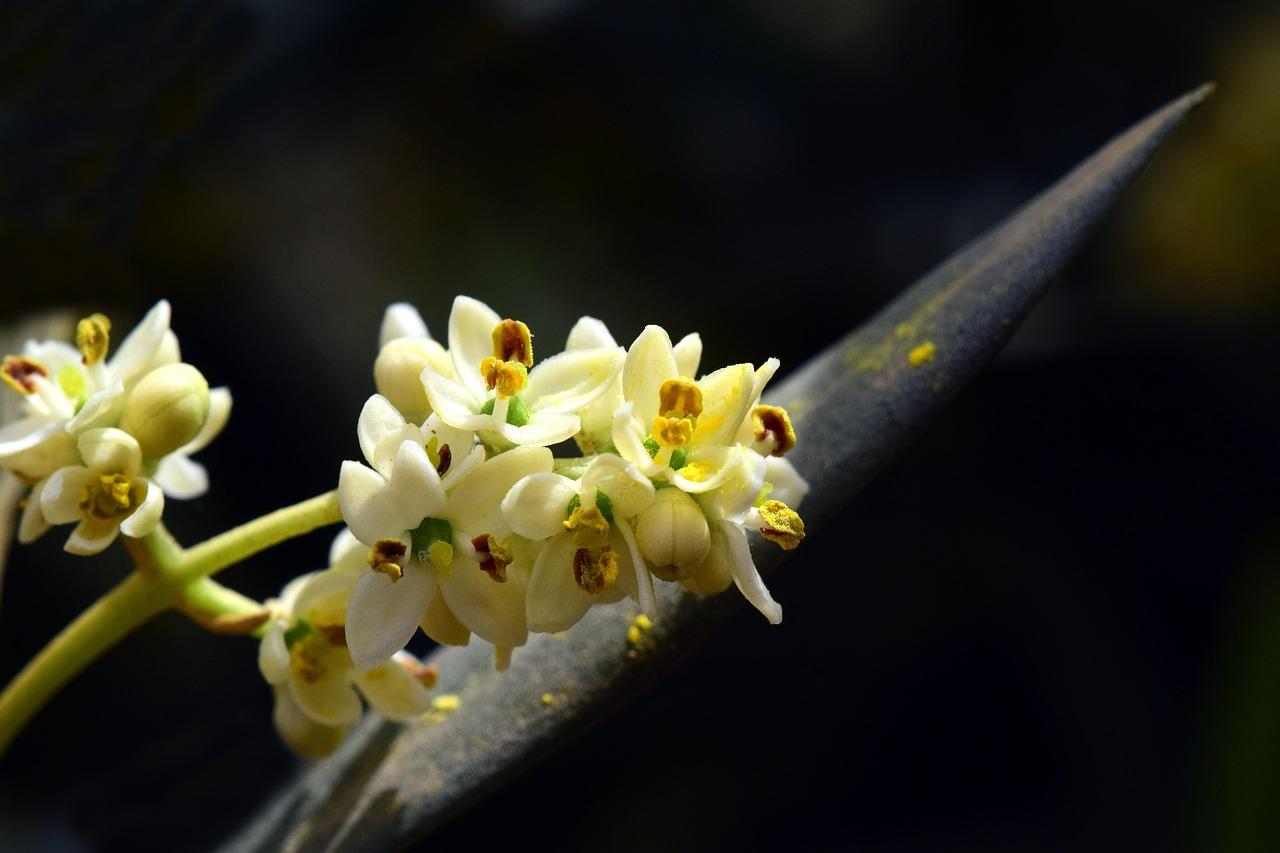
Pomegranate trees bloom brightly, symbolizing passionate love. This small tree is covered in large scarlet flowers during flowering, which, by the way, have little scent. Fruits appear only in autumn.
Apple, pear, and plum trees are more common in mountainous areas. Their blooms bring coolness and a fresh fragrance when the lowlands are already hot. Snow-white canopies covering orchards make spring in the Troodos Mountains look like an illustration from an ancient legend.
Summer
With the arrival of summer in Cyprus, the trees that will bear fruit in autumn and winter begin to bloom. Plumeria emits a sweet tropical fragrance that fills the streets of Cypriot towns and villages. Its flowers are star-shaped, as if carved from thick foam, and their colors range from white and yellow to pink.
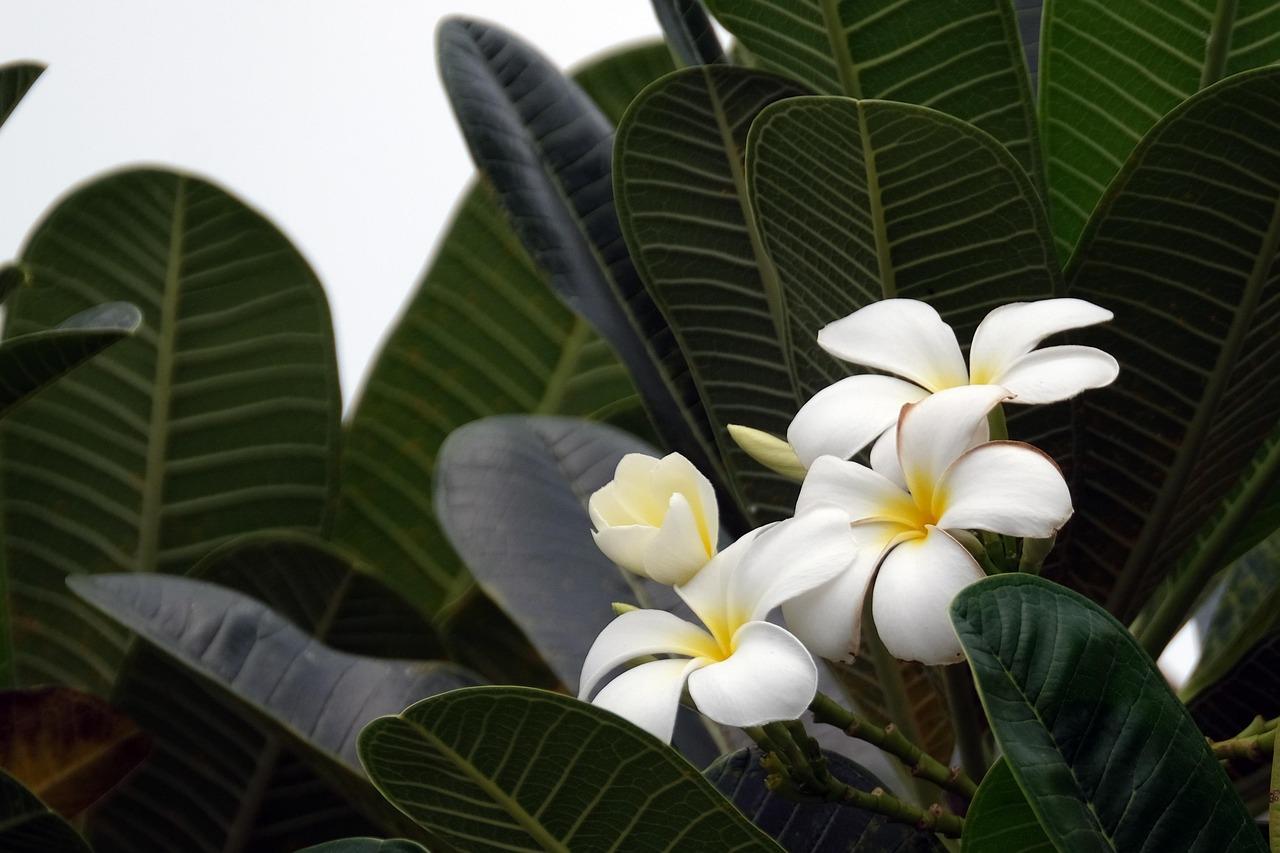
Flame Tree (Delonix regia, “Fire Tree”) is one of the most striking plants of the Cypriot summer. Its canopy seems to ignite, filling the streets with the fire of its color. Among evergreen trees, it stands out not only for its brightness but also for its size — it grows quite tall.
Callistemon starts flowering in spring, but in summer it transforms into a lush fountain of scarlet spikes. Its flower clusters resemble bottle brushes (indeed, up close they look very funny), but their brightness leaves no one indifferent. From a distance, the Callistemon appears grand and impressive, not at all comical.

Brugmansia produces large bell-shaped flowers with a strong fragrance (mainly in the evening). Despite its ominous name, the scent is harmless and does not produce any “effects.”
Oleander is one of the most recognizable small evergreen trees in Cyprus. White, pink, and crimson flowers adorn roads and parks everywhere, and its low-maintenance nature makes it a symbol of the southern character — resilient and passionate.
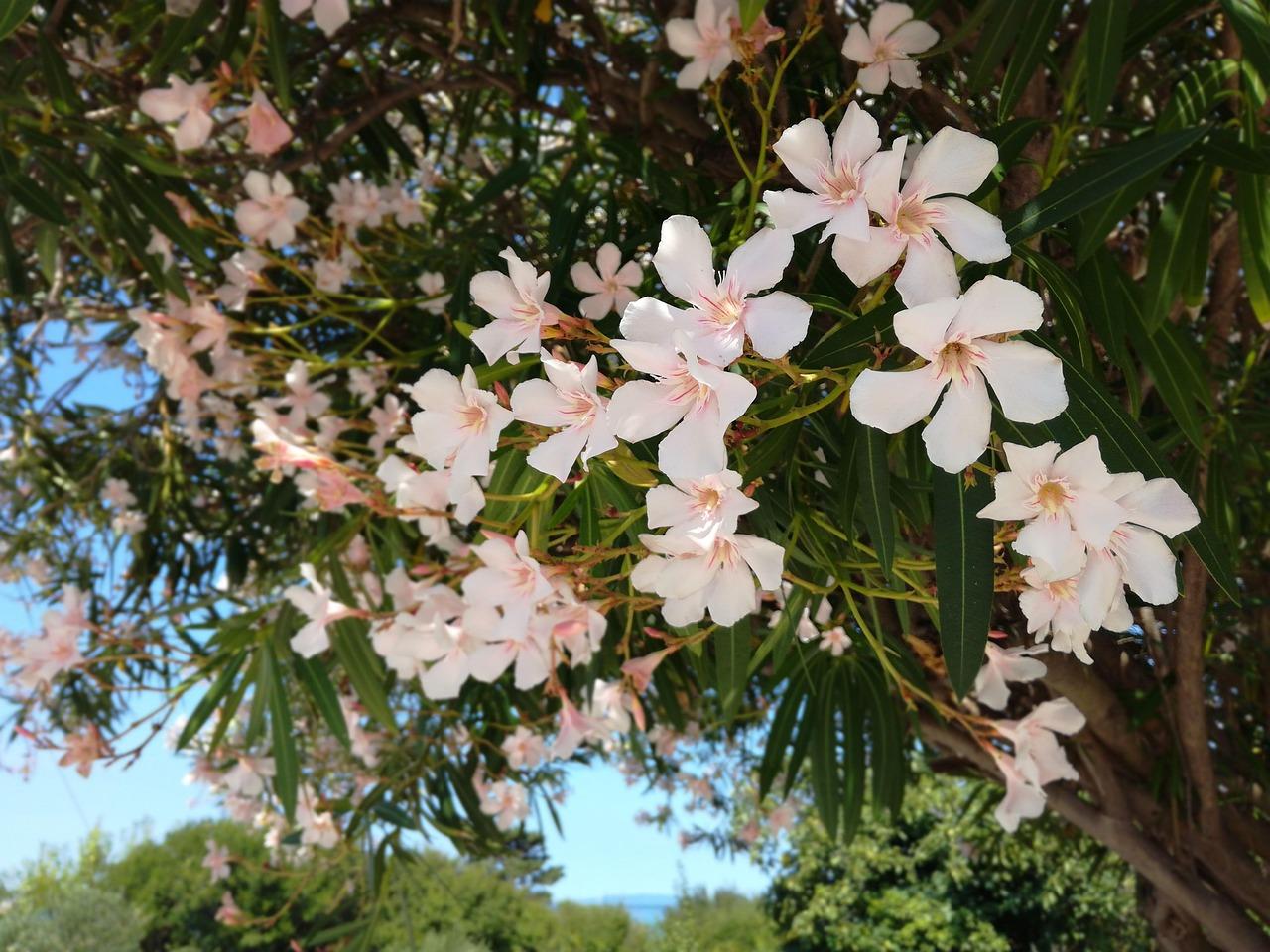
Fig trees have no visible flowers: botanically, the flowers are hidden inside the fruit. So the fig harvest is essentially its secret flowering. Among all trees and shrubs in Cyprus, the fig tree stands out for its fragrance… reminiscent of coconut, not when flowering, but when the leaves are heated by the hot sun.
Feijoa blooms from late spring to early summer. Its fluffy white-pink flowers with burgundy stamens look festive and exotic, though they do not have a strong fragrance.
Kiwi vines prefer humidity and shade, often wrapping around pergolas and gazebos. Since it is a fruit-bearing plant, it is rare on streets but common in private gardens. Kiwi flowers are small and clustered in large panicles.
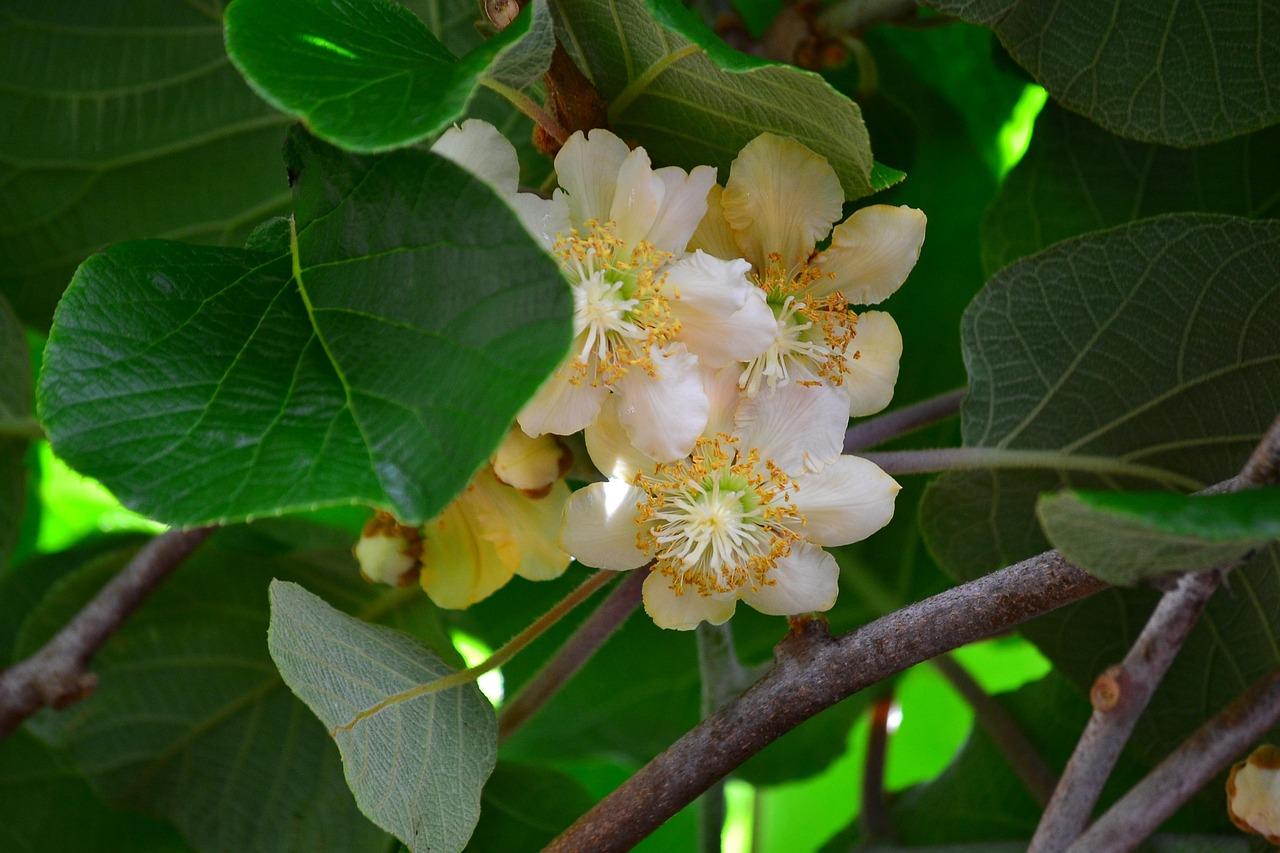
Carambola (Starfruit) is one of the few plants that blooms almost year-round. Its small, lilac flowers are extraordinarily delicate, showing how well tropical trees thrive on the island.
Magnolia completes the summer symphony. Its large, waxy flowers impress with their whiteness and delicacy, while the dense leaves emphasize both their size and fragility.
Fun fact: After flowering, magnolias produce unusual fruits that resemble a tiny bunch of bananas.
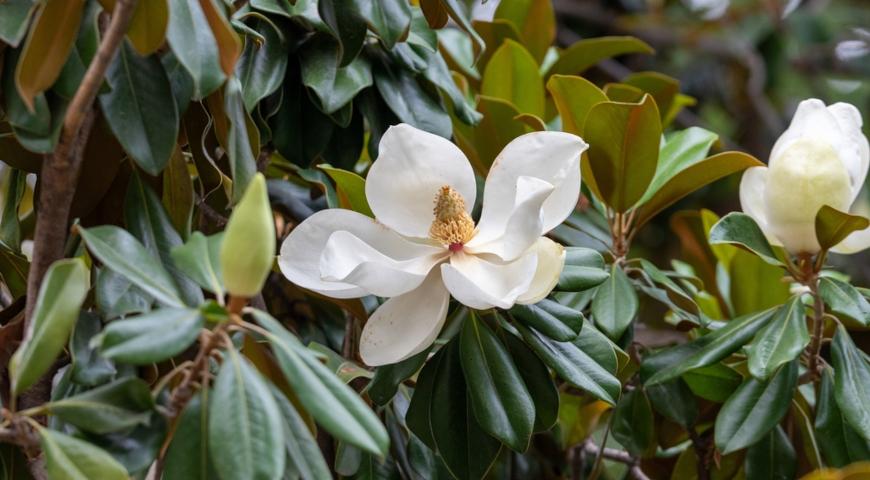
Autumn
Autumn gives a second life to many plants. Among the trees of Cyprus, some may bloom again after flowering in spring. Jacaranda (also called the fern tree or violet tree) blooms for a second time. Its lavender canopies seem to haze the streets of Nicosia, Limassol, and Paphos. While the fern tree may be more striking in May–June, it can still be seen on city streets in autumn.
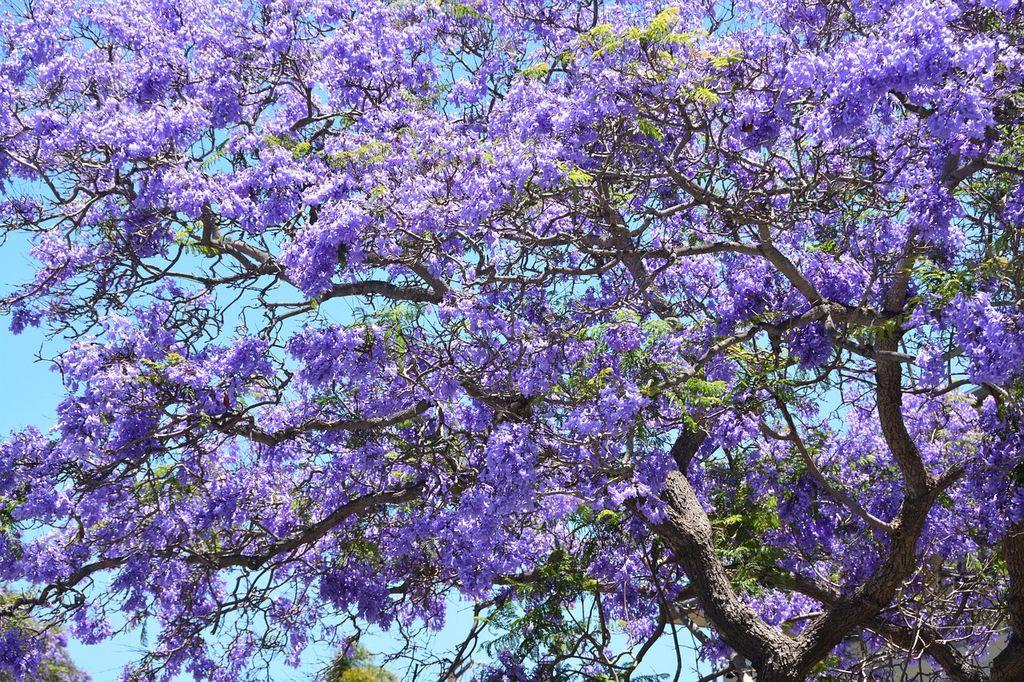
Chorizia impresses with large pink flowers and thick, spiny trunks. This tropical guest has adapted well to Cyprus thanks to the sunny climate. On extremely hot days, its trunk stores moisture, which it uses to sustain itself in the absence of rain.
Carob tree (also called the St. John’s bread tree) blooms modestly, but its importance for the island — and the world — is enormous. Its pods are processed into carob, a natural substitute for sugar and chocolate, suitable for people with diabetes.
Interesting fact: The carob tree is one of the oldest and most useful trees in Cyprus: it provided food for animals, shade for travelers, and income for traders. Today, old carob groves can still be seen in Paphos Park and the village of Anogyra.
Loquat is a small tree whose creamy flowers appear in late autumn. Originally from Asia, it has thrived in Cyprus: its fruits, ripening in early summer, are prized for their soft taste and honey-like aroma.
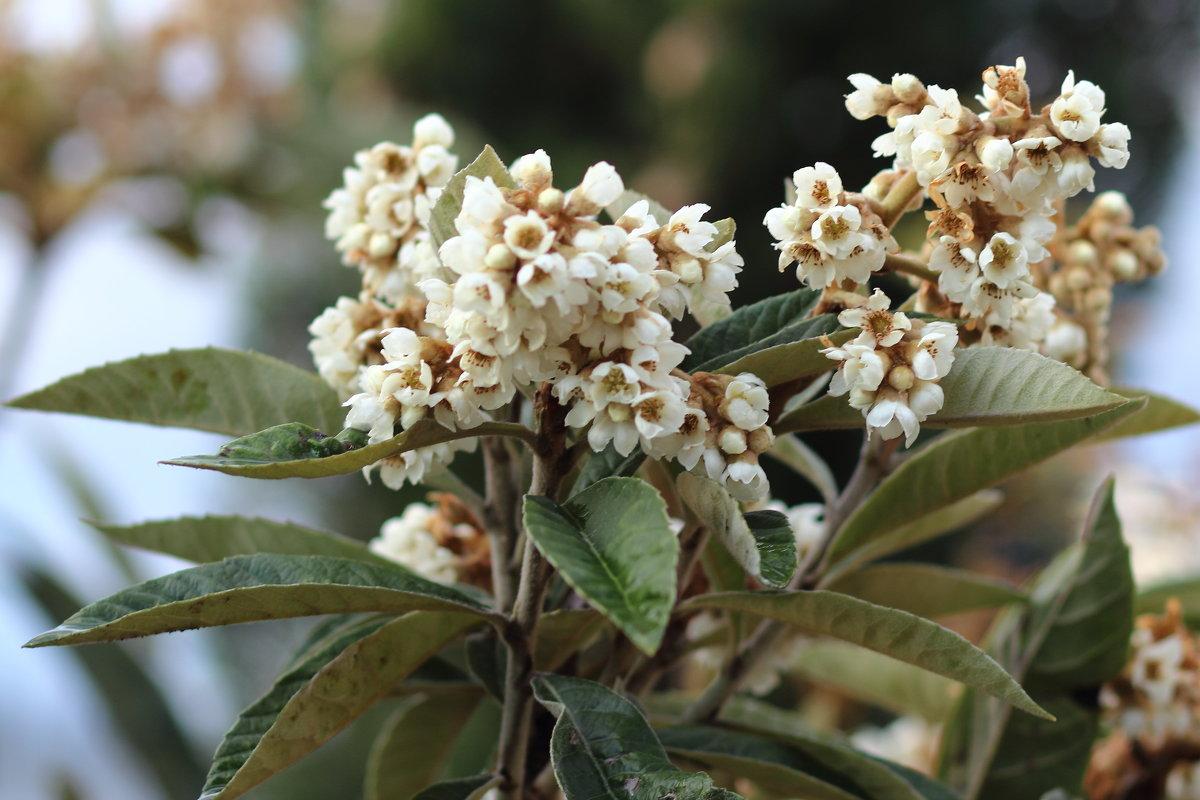
Solanum (decorative nightshade) blooms year-round. Its star-shaped flowers and bright berries bring joy to gardens even during the fading season. By the way, solanum is also popular as a houseplant.
Winter
Even in winter, nature in Cyprus does not sleep, and some plants still manage to bloom. Poinsettia (Christmas Star) reminds Cypriots of the upcoming holiday season. Its scarlet bracts are not petals but modified leaves surrounding tiny flowers. Traditionally, the poinsettia symbolizes light and warmth, which are sometimes in short supply on the island during winter.

Mimosa blooms in February — its bright yellow balls become soft and fluffy when the air is still cool and humid. Everyone knows the mimosa, but not everyone has the chance to see it not just in small branches, but as a whole enormous tree, exuding a wonderful fragrance — a herald of spring.
Passionflower is not a tree but a vine, yet it often climbs so high that it looks like a full-fledged tree. Its multi-layered, intricately shaped flowers cover walls and fences. During the winter months, this plant can even be seen on balconies in houses of coastal cities.

Cyprus does experience seasonal changes, unlike equatorial countries. But flowering happens continuously: there is no time when the entire flora goes dormant. The full variety of species — from carob to flame trees, from jacaranda to olive trees — reminds us of the richness of nature and the beauty of life’s eternal cycle.
Read also:
- Can You Drink Tap Water in Cyprus: Is It Safe?
- The Cypriot pace of life — how the island teaches you to slow down and live in the moment
- Cyprus for remote workers — pros and cons, places and cafés for comfortable work
- How to Get a Cyprus Driving Licence - Full Guide
- Rainy Day in Cyprus? Top Things to Do & See!

